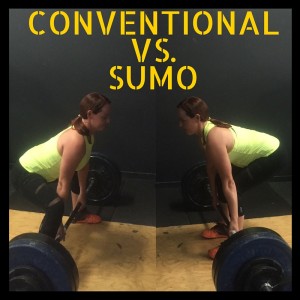Conventional Vs Sumo Deadlift.
Conventional Vs Sumo Deadlift
If you didn’t know already there are two main ways to perform your Deadlift; conventional and sumo. While both variations emphasize the posterior chain, the traditional deadlift typically sends the lifter into a more bent over posture since its performed in a narrower stance. Although the narrower stance may cause trouble to some lifters, it may also help generate more power. By placing their base of support directly underneath the hips, many lifters are able to pull more weight off the floor.
As the name implies, the sumo deadlift forces lifters to assume a wide stance bringing them closer to the ground and allowing them to keep their torso up taller. Some lifters may feel more comfortable being upright, although, many trainers caution that the sumo squat does place a huge emphasis on hip flexibility. To get in the proper position, lifters should work on flexibility around the hips, especially the adductors.
But which should I perform?
Some studies will show through a biomechanical advantage, if you have short arms relative to your torso, you are better suited to adopting a sumo stance when deadlifting. If you have long arms relative to your torso, you will probably find conventional deadlifts easier. The best way to really decide is to try both. Be taught adopting both forms of the deadlift and make a decision once your lifting technique reaches a comfortably advanced level. Out of the two there is no ‘wrong’ deadlift. Both ways performed correctly makes a very beneficial exercise for the human body.




